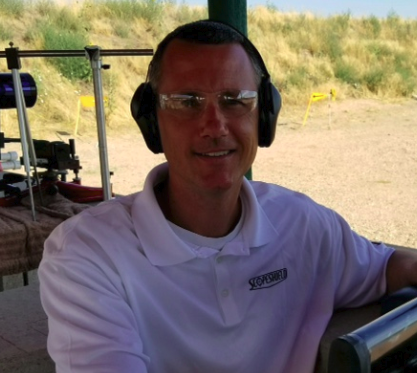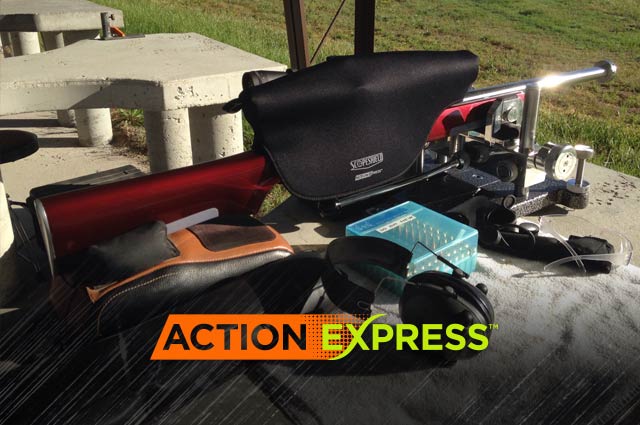
Benchrest National Champion, Jason Stanley.
Benchrest National Champion Jason Stanley shares his secrets on how he tunes his rifle barrels. From start to finish, no questions will be left unanswered in this six-part blog. If you are a hand loader and want to gain every bit of accuracy out of your rifle barrel, then keep reading!
But who is Jason Stanley in the world of Benchrest shooting?
Jason Stanley started shooting competitive Benchrest in 2009. Through those years, he experienced a fair amount of success. Jason has a total of 16 NBRSA State Championships (1 Two-Gun, 5 Grands, and 10 Yardage championships). In 2018 he was the NBRSA Hunter Class and 2-Gun National Champion.
Jason thoroughly enjoys competitive shooting, but his true passion lies in hunting. His mission is to help close the gap between hunting and Benchrest. Many of the skills, techniques, and tricks he has learned through Benchrest can be adapted and applied to hunting. He wants to share this information with you in an informative yet not so technical style.
In this blog, Jason shares his thoughts and processes for tuning a rifle barrel. In simple terms having a rifle that is in tune means that the rifle will shoot multiple bullets in the same spot. As a competitive shooter, this is the name of the game. More importantly, as a hunter, this could be the difference between wounding an animal and making a clean, ethical, kill shot.
What Jason will be covering in the upcoming posts:
- Bullet Selection
- Powder Charge
- Seating Depth
- Neck Tension
Without further ado let’s dive right in.
Introduction to Tuning a Rifle Barrel
In Benchrest, we are either trying to shoot the tightest group (precision) or consistently trying to hit a small dot, commonly called an X (accuracy). In order to do either of those, we need a rifle that is in tune. On the simple side of definitions; having a rifle that is in-tune means the same bullets will all hit relatively the same spot.
I am going to outline my tuning procedure for a new Krieger 30 caliber barrel, 1/17 twist, chambered in 30BR that I had put on my heavy varmint rifle for the 2019 season. I have included pictures to help explain the process and choices I made during the load development. This blog will include all the successes and failures that go along with load development. No sugar coating anything in this writing.
One important thing to keep in mind when tuning a barrel is that the accuracy level needed is always relative. This particular write-up is for a competition Benchrest barrel. To be competitive, I need to consistently shoot in the low ones and a couple of high zero-inch groups would be greatly appreciated. If I was tuning a hunting barrel, my process would be the same, but my accuracy level would not be near as precise. It is all relative. Think about your intended use and adjust the requirements accordingly.
No matter which tuning method you use, I believe there are some keys to tuning a barrel. First, keep detailed notes. I realize you can remember what you did one or two days prior while you were loading up your rounds, but you need to be able to remember (good and bad) what you did years later. You have to be able to trust your data to make logical decisions along the way. Bad or wrong data is worse than no data at all. Second, only change one variable at a time. You want to look for trends and systematically look for a load that consistently shoots small. We need to be able to figure out what caused the good or bad groups. The easiest way to do that is to only change one variable at a time. Third, you want to find a forgiving load. The way you do this is to look for the tune window. We are looking for the range of powder charges, seating depths and neck tensions that consistently shoots small. Once you find the tune window, you go right in the middle. One little variation should not destroy or make our group. We are not after that “wallet” group that only worked one time during one day.
As a hand loader, I can change the following main items that will influence the tune of the barrel:
- Type of bullet
- Seating depth of that bullet
- Neck tension
- Type of powder
- Powder charge
- Type of primer
Since this barrel is chambered for a 30BR I already know that I am going to shoot H4198 and CCI BR4 primers. For this project, I need to figure out; which bullet BIB 112 gr 7 ogive (112-7) or BIB 118 gr 10 ogive (118-10), powder charge, seating depth, and neck tension.
Check back soon for part 2 of 6. Next time, we dive into setting up and preparing to tune your rifle.






